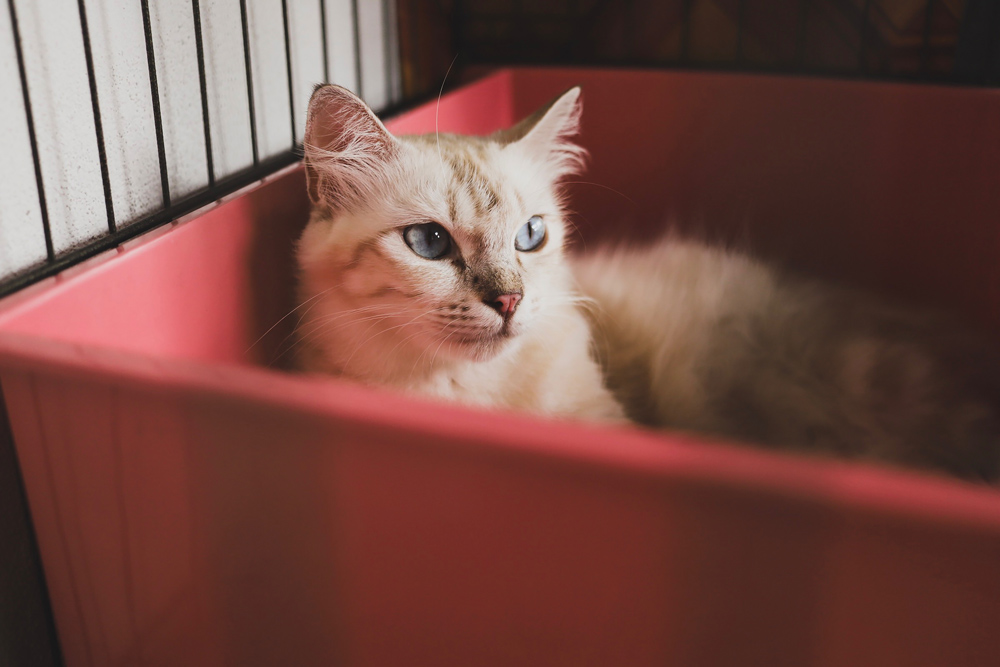Cases of Feline idiopathic cystitis (FIC) or bladder inflammation are often found in cats. Until now, the trigger for the occurrence and predisposition of cat breeds susceptible to this disease is still not certain. However, from a survey of veterinarian practice and animal hospitals, most FICs are suffered by male cats over two years old and rarely occur in female cats. The most common complaint submitted by pet owners is difficulty in urinating due to the presence of struvite stones or sedimentary granules clogging up the urethra or bladder. So besides the difficulty to urinate, the cat also experienced bloody urine. As is often found in patients at Universitas Airlangga Veterinary Teaching Hospital (UNAIR RSHP).
A female mixed-breed Persian cat was brought by her owner to UNAIR RSHP with symptoms of difficulty urinating and not eating for two days. Based on the X-Ray examination, Ultrasonography (USG) and blood analysis, the cat was diagnosed with chronic Feline idiopathic cystitis (FIC). Veterinarians on duty immediately conduct a catheterization (inserting a small pipe from the bladder to the exit) to drain the blocked urine accompanied by mucoid exudate (pus). Then the urinary tract is cleaned using normal saline solution.
Catheterization is an emergency action that must be done immediately, besides to remove urine and clean the urethra, this action can also reduce excessive pain from the cats. When the pain is reduced, the level of comfort increases so the cat is eager to eat a lot to support the healing process. In addition to catheterization, the cat is also given anti-inflammatory drug therapy, specific antibiotics, diuretics, and multivitamins. A few days after being admitted to UNAIR Hospital, the patient’s condition was getting better and could be brought home by the owner.
During the treatment for several months in the future cats were highly recommended to consume the type of urinary feed available with several commercial brands. Animal dry feed with the label “Urinary” of any brand has been specially formulated for therapy. This type of feed can reduce urinary tract pH and limit certain types of proteins and minerals. It aims to prevent the addition of mineral deposits and slowly destroy the granules of oxalate sediments that have formed. So it does not get bigger into a stone that blocks the urethra. If the urinary tract obstruction in the case of FIC is already quite big, then the most effective action is surgery.
Feline idiopathic cystitis (FIC) generally occurs in animals that have consumed dry food for many years but are not followed by adequate water consumption. Stress factors are also thought to be a major cause of FIC. Therefore, if we are committed to adopting an animal, give it enough love, pet it and play with it. Because giving food and drink is not enough. Every creature has a “feeling” then keeps them healthy and happy. This balance keeps the body away from disease.
Author : Herinda Pertiwi
Details of this research available at:
Tri Bhawono Dadi, Herinda Pertiwi, Dinda D Guntaran, Rizka Mulia Ananda, Ganang Pudyastungkara. 2019. Chronic Feline Idiopathic Cystitis on Female Cat: A Case Report Fig. 2. Thicktening of vesica urinary





